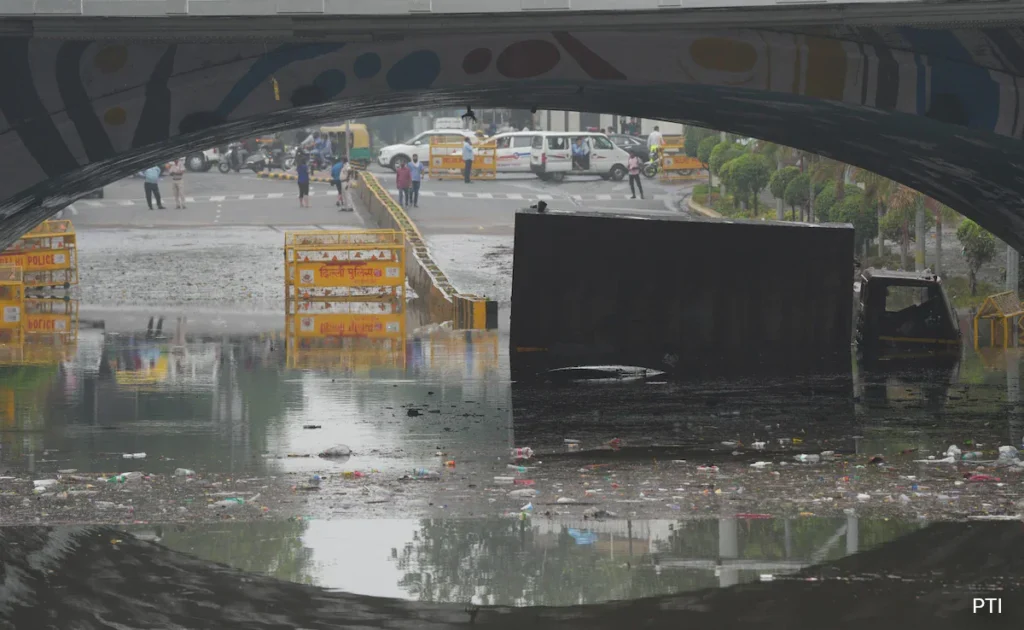The Meteorological Department reported that Delhi received 228 mm of rainfall from 8:30 am yesterday to 8:30 am today, marking the highest 24-hour rainfall in June since 1936, when 235.5 mm was recorded.

Torrential rainfall in Delhi-NCR that began yesterday caused widespread waterlogging and severe traffic jams this morning.
The Meteorological Department reported that Delhi received 228 mm of rainfall from 8:30 am yesterday to 8:30 am today, the highest 24-hour rainfall in June since 1936, when 235.5 mm was recorded.
Typically, Delhi averages 80.6 mm of rain in June.
The deluge in Delhi-NCR has profoundly affected daily life, causing severe waterlogging and traffic jams during the morning commute.

However, the downpour brought relief from the intense heat of the past two months, with today’s minimum temperature recorded at 24.7 degrees Celsius, 3.2 degrees below normal.
This unprecedented rainfall has underscored deficiencies in the city’s infrastructure.
Despite Delhi Mayor Shelly Oberoi’s assertion on June 18 that the city was monsoon-ready, the first substantial rain has already resulted in significant waterlogging.

Shelly Oberoi had earlier guaranteed that storm drains were clear and prepared, ensuring a trouble-free monsoon for Delhi residents.
Key intersections such as ITO experienced water accumulation of about two to three feet, resulting in extensive traffic congestion.
The Hanuman Temple Intersection leading to Mandi House was submerged under three feet of water, prompting road closures and disruptions on Ashoka Road, Feroz Shah Road, and Connaught Place. Similar conditions were reported in Moolchand and other parts of Delhi.

In Noida, the situation was equally severe. Despite inspections conducted by the CEO of Noida Authority and officials on Thursday, heavy rainfall resulted in significant waterlogging in numerous areas, including the Mahamaya Flyover, Sector 62, and Sectors 15 and 16.






